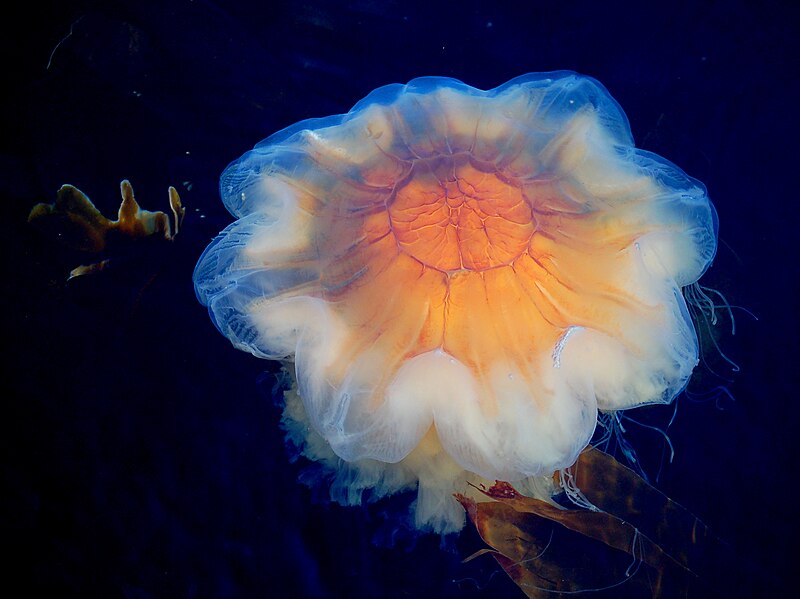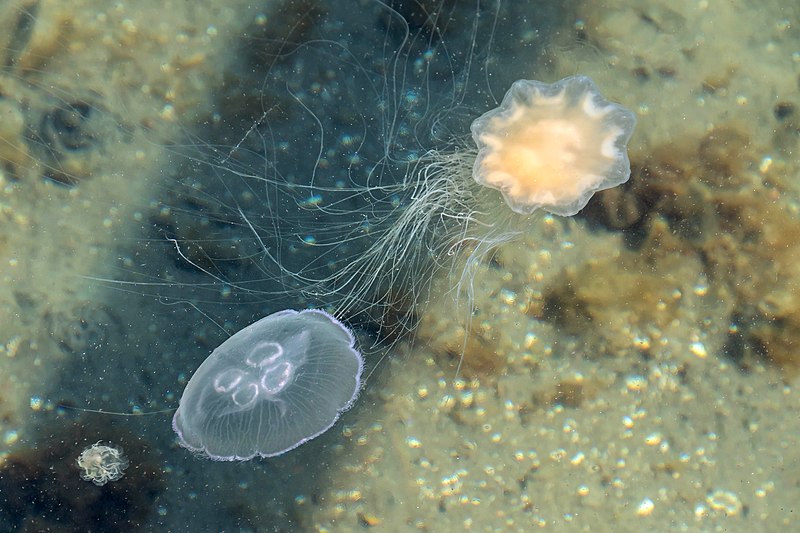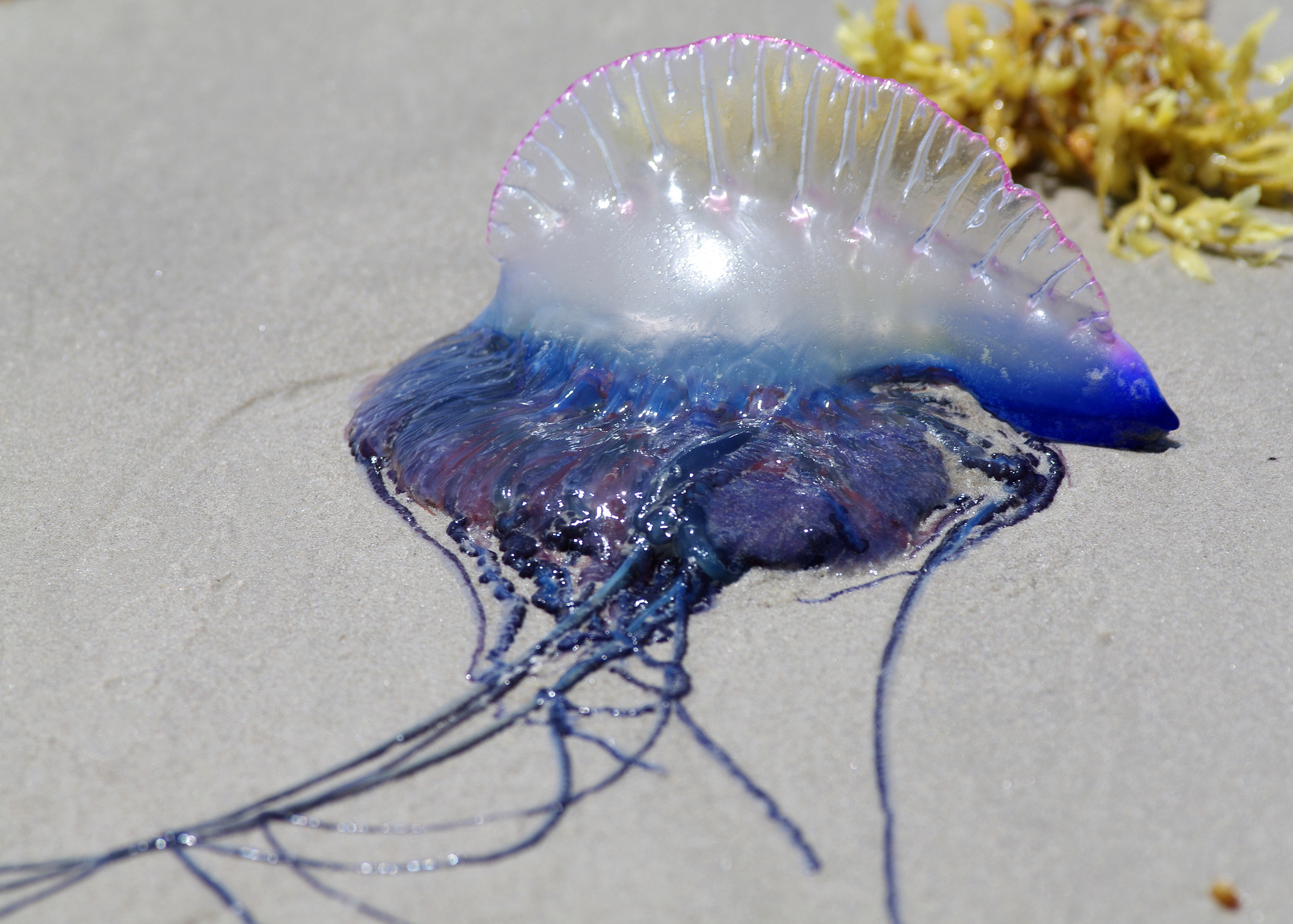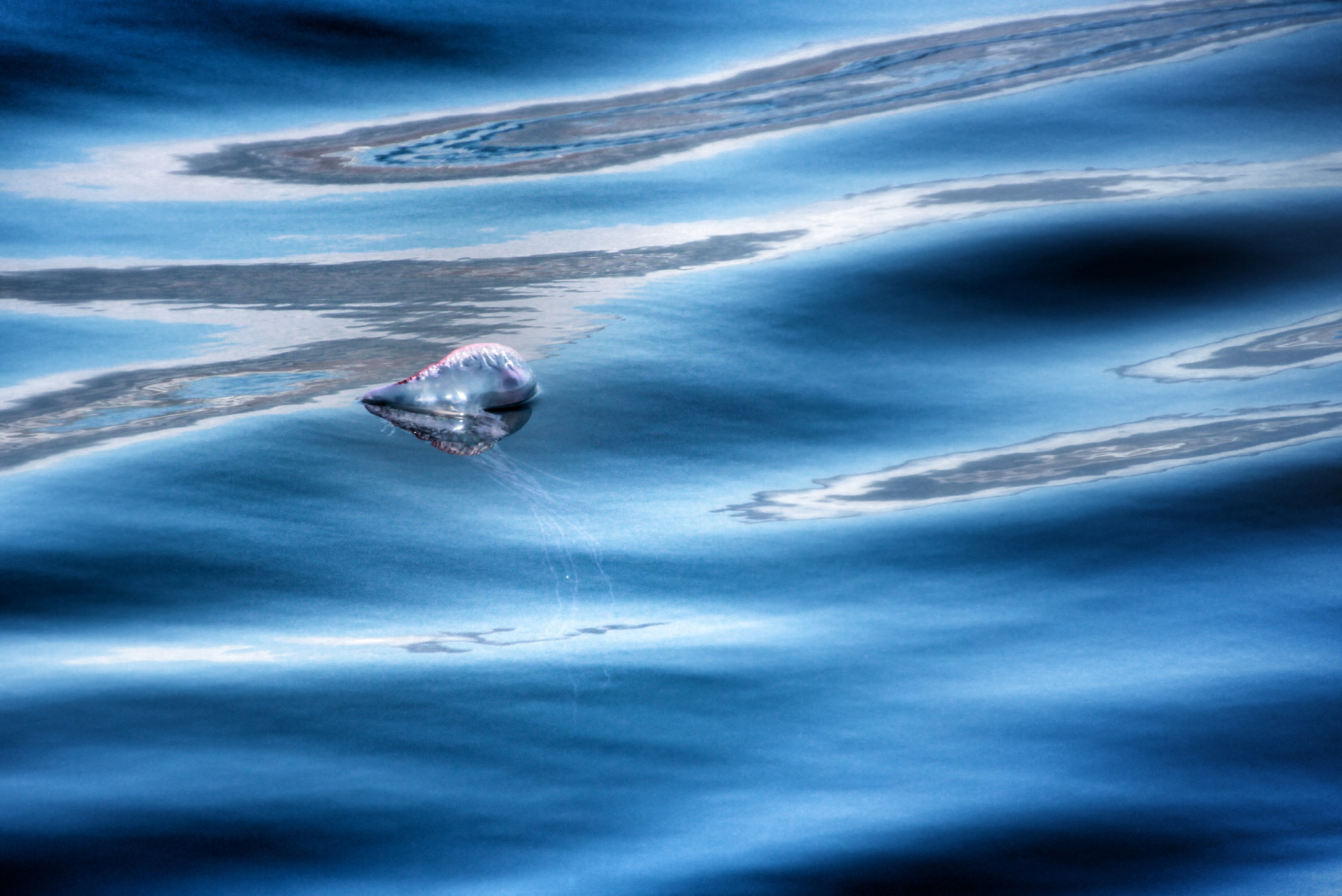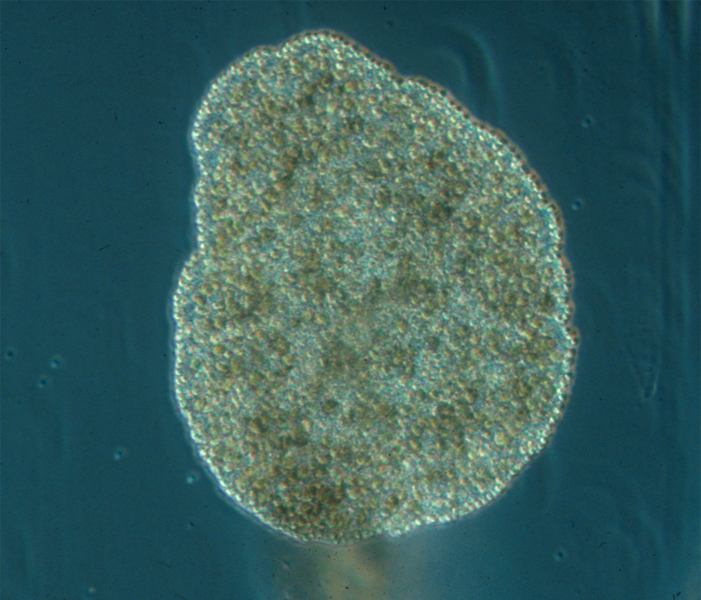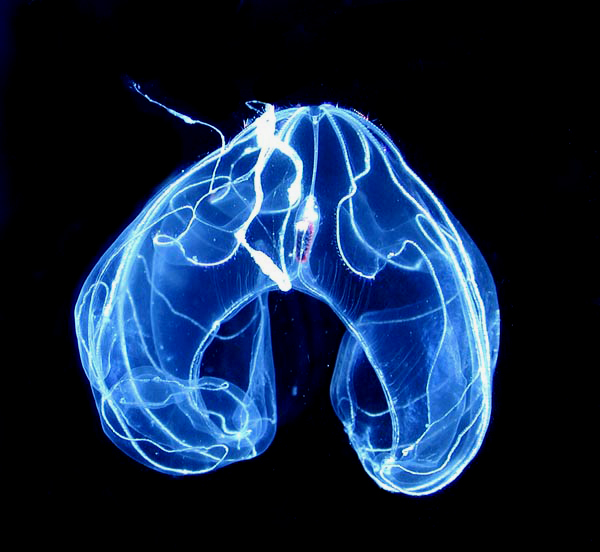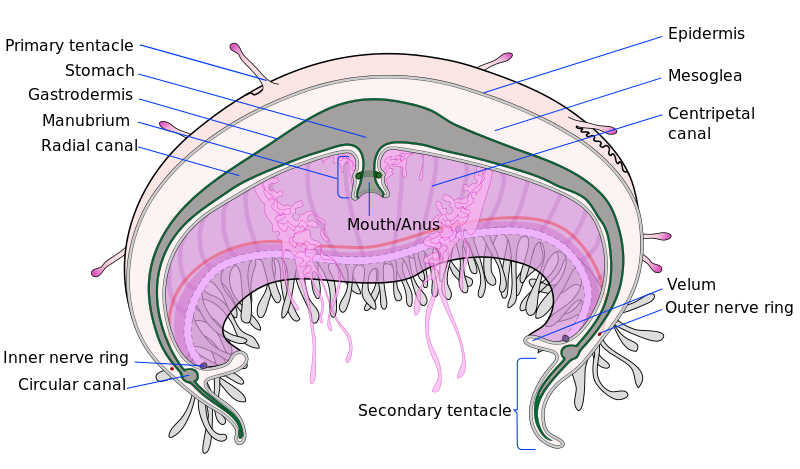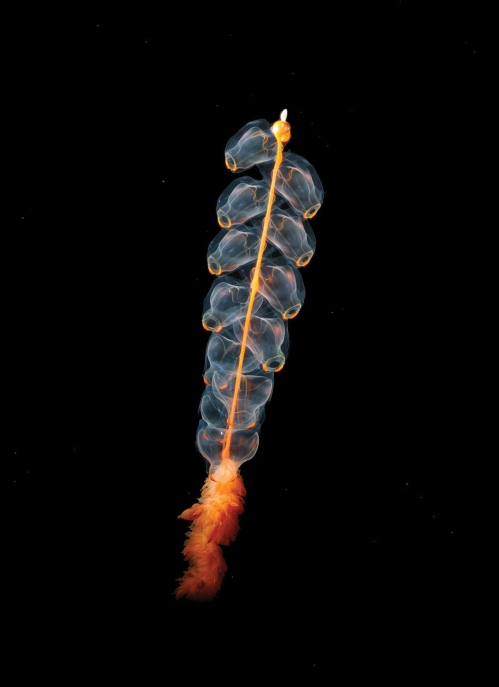by Piter Kehoma Boll
Today is time to talk again about a celebrity.
Although three cnidarians have been featured as Friday Fellows already, none of them was a jellyfish until now. So let’s introduce the first one and let it be a considerably famous species, the lion’s mane jellyfish Cyanea capillata.
The lion’s mane jellyfish is a very large jellyfish, among the largest species known to date. Its bell can reach up to 2 m in diameter and its tentacles can grow up to 30 m in length, thus becoming longer than a blue whale! It is an inhabitant of the very cold waters of the Arctic and neighboring areas of the Atlantic and Pacific oceans. It cannot survive in warm waters and specimens living in the southernmost areas of its range cannot even grow to the full size.
The color of an adult lion’s mane jellyfish is pale red or pale yellow. Its genus name, Cyanea, which refers to a blue color, is due to another species of the genus, the blue jellyfish, Cyanea lamarckii. Its specific epithet, capillata as well as its common name are references to its dense mass of tentacles that resemble a lion’s mane. The jellyfish’s bell is divided into eight lobes, each lobe having from 70 to 150 tentacles. The indentations between the lobes contain a special organ, the rhopalium, that helps jellyfishes orient themselves in water.
Like all jellyfishes, the lion mane jellyfish has a complex life cycle. Adult specimens reproduce sexually in summer, with males releasing sperm into the water. The sperm swims into the body of the female, where the eggs are fertilized. The first life stage, the larva, grows inside the body of the female and is then released into the water where it attaches to a surface to become a polyp. The larvae seem to prefer rougher surfaces to attach and especially in darker places. The polyp grows during winter and reproduces asexually during spring. The asexual reproduction, called strobilation, occurs by the polyp releasing segments that become ephyrae, which are like very young jellyfish. The ephyrae grow to become adult jellyfish and restart the cycle.
The lion’s mane jellyfish feeds on a great variety of species during its life cycle, including plankton, invertebrates and even small vertebrates. Nevertheless, its huge body is also used as the habitat of several other animals that live in the cold northern waters. It also has a complicated relationship with the moon jellyfish, Aurelia aurita, with which it shares its habitat. While adult lion’s mane jellyfish prey on adult moon jellyfish, adult moon jellyfish prey on larvae and ephyrae of the lion’s mane jellyfish, and both species also compete for the same prey.
Like all cnidarians, the lion’s mane jellyfish stings. The contat with a single tentacle in humans usually does not cause much complication except for those with some sort of allergy or sensitivity. However, if you are unfortunate enough to end up swimming directy into the tentacle mass of a specimen, becoming covered by that stinging nightmare, you may end up having to be taken to a hospital quickly. Despite the low risk of killing a human, one lion’s mane jellyfish became famous as the assassin in one of Sherlock Holmes’ cases. The victim was an unfortunate guy with a heart condition, though.
– – –
More cnidarians:
Friday Fellow: Deep-Sea Marr (on 22 April 2016)
Friday Fellow: Portuguese Man o’ War (on 7 July 2017)
Friday Fellow: Blue Coral (on 18 May 2018)
– – –
– – –
References:
Brewer RH (1976) Larval settling behavior of Cyanea capillata (Cnidaria: Scyphozoa). The Biological Bulletin 150(2). https://doi.org/10.2307/1540467
Gröndahl F, Hernroth L (1987) Release and growth of Cyanea capillata (L.) ephyrae in the Gullmar Fjord, western Sweden. Journal of Experimental Marine Biology and Ecology 106(1):91–101. https://doi.org/10.1016/0022-0981(87)90149-3
Gröndahl F (1988) A comparative ecological study on the scyphozoans Aurelia aurita, Cyanea capillata and C. lamarckii in the Gullmar Fjord, western Sweden, 1982 to 1986. Marine Biology 97: 541–550. https://doi.org/10.1007/BF00391050
Wikipedia. Lion’s mane jellyfish. Available at < https://en.wikipedia.org/wiki/Lion%27s_mane_jellyfish >. Access on 3 September, 2020.
– – –
* This work is licensed under a Creative Commons Attribution-ShareAlike 3.0 Unported License.
This work is licensed under a Creative Commons Attribution-ShareAlike 3.0 Unported License.
** This work is licensed under a Creative Commons Attribution-Share Alike 2.0 Generic License.
This work is licensed under a Creative Commons Attribution-Share Alike 2.0 Generic License.


